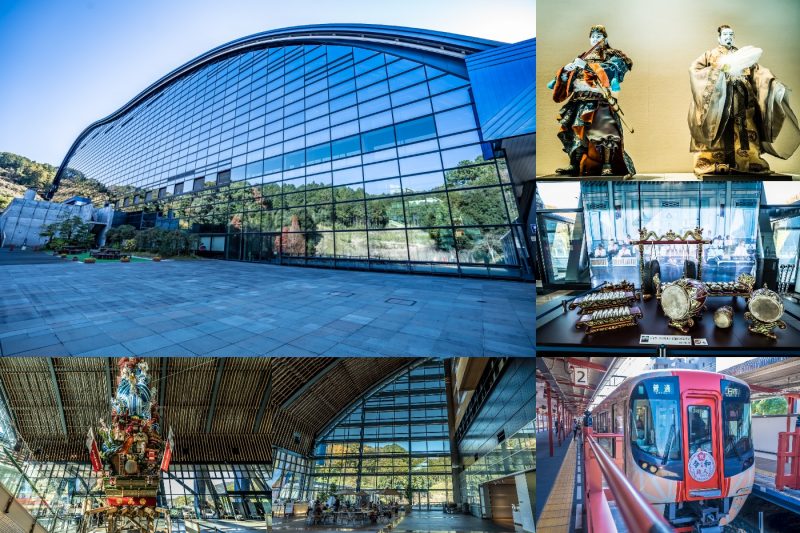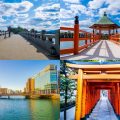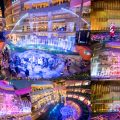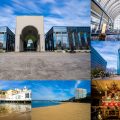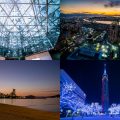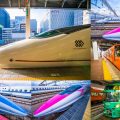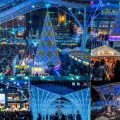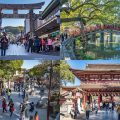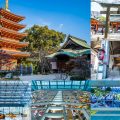[Introduction]
I traveled to Fukuoka, in mid December. While Fukuoka has an image of gourmet town, it has also tourist spots more than I expected. In this article, I will write about Kyushu National Museum as part of Day 4. Kyushu National Museum is located near Dazaifu Tenmangu, and I visited the museum along with Dazaifu Tenmangu.
[Visit Places (series of articles)]
* Day 1: Fly to Fukuoka with ANA
* Day 1: Ohori Park and Nakasu
* Day 1: Canal City Hakata (Illumination)
* Day 2: Marinoa City Fukuoka
* Day 2: Fukuoka City Museum and Momochi Seaside Park
* Day 2: Fukuoka Tower (Illumination)
* Day 3: Marine World Uminonakamichi
* Day 3: JR Hakata Station
* Day 3: JR Hakata Station (Illumination)
* Day 4: Dazaifu Tenmangu
* Day 4: Kyushu National Museum [This article]
* Day 4: Tenjin (Illumination)
* Day 5: Fukuoka Airport
[Travel Date]
2019.12.12-16
[Main Part]
Kyushu National Museum
Following the previous post, I walked for 5 minutes and reached “Kyushu National Museum”.
“Kyushu National Museum” was opened in 2005 as the fourth national museum in Japan, following Tokyo, Nara and Kyoto.
While the other three national museums are fine arts museums, “Kyushu National Museum” elevates the focus on history over art.
In particular, the museum’s special focus carries with it “a new perspective on Japanese cultural formation in the context of Asian history”.
Special exhibitions are held frequently and when I visited the museum, the exhibit of “Three Kingdoms” was taking place.
“Three Kingdoms”, the tripartite division of ancient China (220–280 AD) among the states of Wei, Shu, and Wu, is popular in Japan, as there are several novels and cartoons related to it.
Let’s go into the exhibition. As you can see, there were lots of visitors.
Here are several photos.
The statue of Guan Yu, one of the main characters.
There are a variety of characters in “Three Kingdoms”.
A procession of horse-drawn buggies and troopers.
I was surprised to see there had been already such a weapon in China in the third century.
Arrows.
Clay figures.
Guan Yu is one the of main characters in “Three Kingdoms”.
Taking of Guan Yu, there are lots of Kwan Tai temples, which honored him, in not only mainland China, but also other Asian countries including Japan.
Actually, I have visited some of Kwan Tai temples.
- Kuala Lumpur, Malaysia (2015/09) (related article)
- Macau (2018/12) (related article)
- Kobe, Japan (2019/03) (related article)
Finally. figures of the main characters in “Three Kingdoms” including Liu Bei, Cao Cao, Sun Quan and Zhuge Liang.
The right figure was Zhuge Liang, the military strategist in Shu.
I finished watching the exhibition and took several pictures in the museum.
I stopped by a cafe in the museum for a quick rest.
I ordered a mixed berry parfait and coffee.
Then, I left “Kyushu National Museum” to return to Tenjin area.
Luckily, the return train was “Tabito”, a special tourism train.
[Closing]
That’s it for the article about Kyushu National Museum as part of Day 4.
The special exhibition of “Three Kingdoms” was very interesting to me, as I have read related novels and comics before. The museum is located near Dazaifu Tenmangu, so I recommend visitors go to both places 🙂
In the next article, I will write about Tenjin as part of Day 4.
[Map]
1 Kyushu National Museum
2 Dazaifu Tenmangu
3 Dazaifu Station
[Related Link]
Fukuoka City Gide “YOKA NAVI”
Fukuoka Convention & Visitors Bureau
Kyushu National Museum
Dazaifu Tourism Train Tabito
I would appreciate it if you could share my article via the following SNS buttons.

